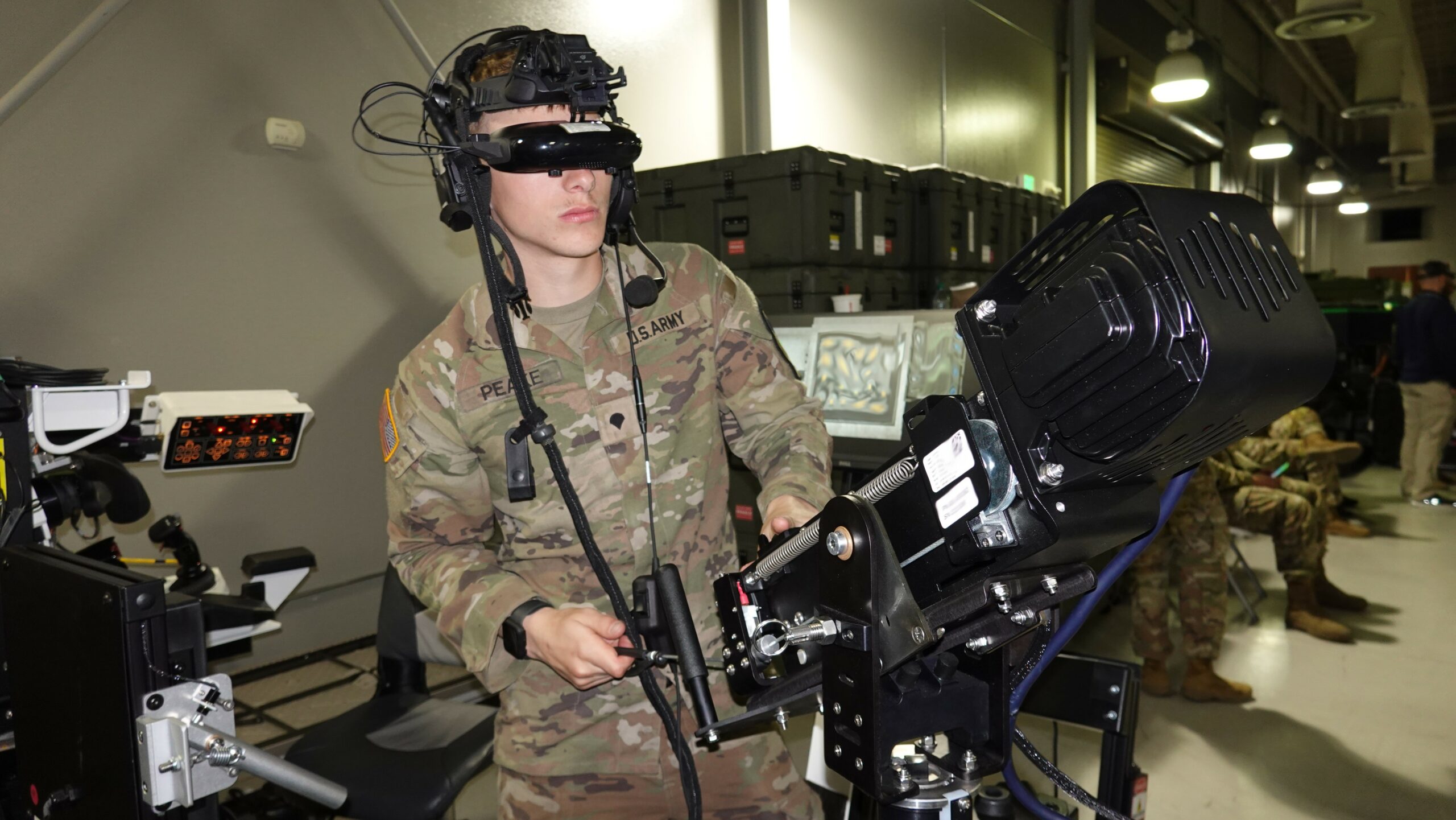US Army Tests Virtual Simulation Environment for Indoor Military Training
The US Army has begun testing new virtual synthetic training environments (STEs) for indoor military training in Texas.
These platforms support the service’s efforts to employ realistic, modern battlefield preparations for warfighters by combining augmented, virtual, and gaming technologies.
They were installed at the Close Combat Tactical Trainer hub at Fort Cavazos for evaluation.
According to the army, the information collected from utilizing these new solutions will be the basis of future practices focusing on interoperability between aerial and ground troops stationed at different sites.
Benchmarks identified in the trials will include the systems’ limits and applications for additional virtual reality-based training use cases.
“You can do training virtually instead of physically going out in the field and having to spend the fuel, the ammo, and the logistics of moving chow and everything,” US Army Operational Test Command (OTC) Assistant Test Officer Robert Carroll stated.
“The idea is, you could send some of this equipment over and you could set some of this up instead of those units having to leave to go out and do their training.”
“They could actually fire these up and do a collective training as well as – with this being networked – they should be able to reach back to wherever and still be participating in collective training with other elements.”
Initial Test Platoon
The first group selected to validate the STE’s effectiveness includes personnel from the 1st Cavalry Division (1st CAV), which specializes in armored fleets such as the Stryker and Bradley fighting vehicles and Abrams main battle tanks.
Abrams Loader Spc. Tanner James Peake highlighted one of the benefits of using STE solutions.
“I think the [virtual reality] goggles are a major upgrade for the loader and the tank commander because you can actually see outside of the tank and see where you’re going versus having to look through a hatch all the time. Those are really the upsides.”

Gathering Insights
Experiences and feedback from the 1st CAV are being transmitted to the Army Evaluation Center at the Aberdeen Proving Ground, Maryland, where they are evaluated by experts and relayed to senior leaders for decision-making.
“We’re looking to see if they’re running into an issue, how they overcome the issue, and those Soldier interactions are recorded, so we really capture what is going well with system, what’s not going so well with system, and how it can be improved for the Soldier if it gets fielded,” OTC Military Test Plans Analyst Shelby Schoolcraft explained.
“We’re doing a test that evaluates the ability for the system to be effective, suitable, and survivable for the Soldier to train on.”












